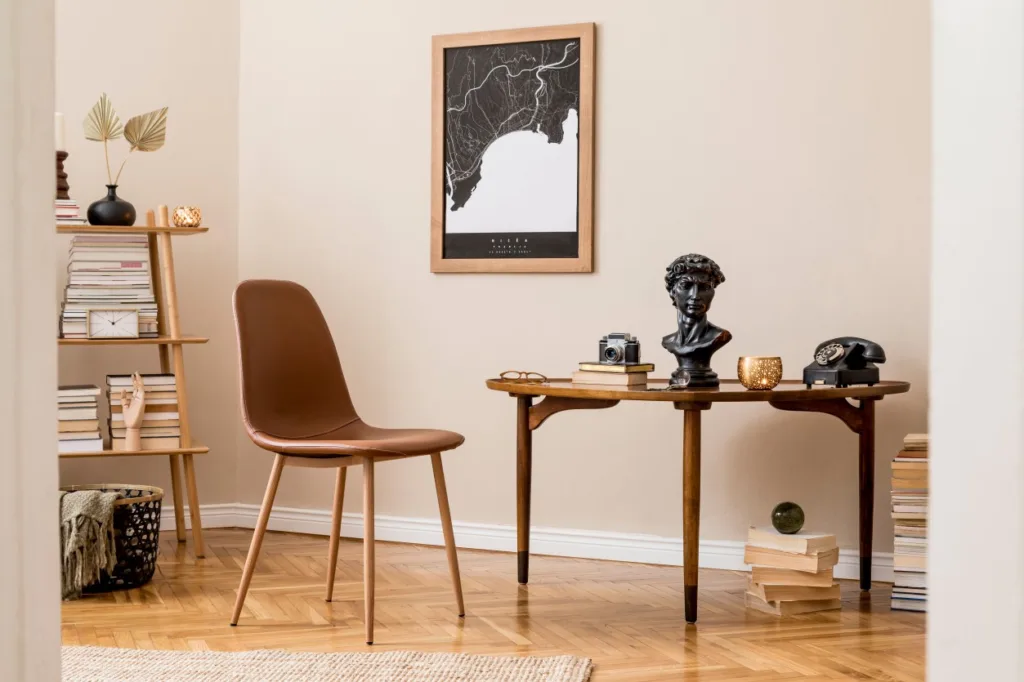When it comes to iconic furniture that merges modern appeal with timeless cadence, the Gubi chair remains a frequent subject in design circles. Built on the Scandinavian ethos of form meeting function, the Gubi chair not only carries a designer label but also a price tag that evokes an inevitable pause. Is the Gubi chair worth it? For anyone navigating the delicate balance of investment, aesthetics, and comfort in home décor, this question isn’t just practical—it’s deeply personal.
Understanding the Gubi Chair’s Appeal
The Gubi chair is a product of GUBI, a Danish design house recognized for reviving iconic mid-century and contemporary furniture. Instantly recognizable for its minimalist silhouette, supple curves, and ergonomic consideration, the chair toes the line between art and utility.
Several models exist under the Gubi umbrella—perhaps the most well-known are the Beetle Chair and the Gubi Dining Chair. Both are celebrated for their lightweight design, sculptural construction, and a wide array of upholstery and base finish options. Whether you are adorning a reading nook, a gallery-style kitchen, or revamping your dining area, Gubi chairs are often praised for how seamlessly they integrate with various interior styles—from Scandinavian simplicity to more eclectic aesthetics.
Design, Materials, and Craftsmanship
What elevates the Gubi chair from a crowd of similarly styled seating is the precision of its craftsmanship. The shell is made from molded polypropylene—offering moderate flexibility and support—and is often paired with velvet, leather, or woven fabric upholstery. Bases range from sleek metal frames to elegant wooden legs.
- The Beetle Chair’s inspiration from the insect world explains its organically rounded backrest and seat; these intentionally mimic the contours of a beetle’s shell, aiming to cradle the body ergonomically without excessive bulk.
- The Gubi Dining Chair, originally designed in the 1950s by Komplot Design, stands out with its structure crafted from laminated wood veneer, making it lightweight yet resilient.
These are chairs thoughtfully designed to stand the test of time—not only in terms of durability but in how gracefully they age with evolving décor.
Comparing Gubi to More Affordable Alternatives
It’s impossible to evaluate “Is the Gubi chair worth it?” without a genuine look at value. At prices ranging from $400 to over $1000 per chair depending on materials and finishes, Gubi chairs are a clear investment. So, how do they hold up against less expensive options?
Budget furniture brands often feature similar silhouettes inspired by the Gubi aesthetic but cut significant corners with materials—hard plastic shells, limited color options, flimsy bases, and upholstery prone to pilling or tearing within a season or two.
Yes, a less expensive dupe may mirror the shape, but it rarely matches the tactile experience or durability of a real Gubi chair over years of everyday use.
Weighing Comfort and Long-Term Support
Having owned a variety of designer and non-designer chairs over the years in my own home, I can affirm what a difference daily comfort makes. The gubi chair isn't plush—it’s no overstuffed armchair—but what it offers is a supportive contour ideally suited for conversations over dinner, late-night emails at the kitchen counter, or simply sitting in silence with a morning coffee.
The slight curve in the backrest supports natural posture, and the optional upholstered seat adds to the sense of ease. For those investing in dining chairs specifically, comfort should never be understated. A beautiful chair that's uncomfortable? It ends up being an expensive piece of sculpture no one wants to sit in.
Aligning with Interior Aesthetics
One of the unsung strengths of Gubi chairs is their ability to harmonize with diverse interiors. Move them from a mid-century open-space kitchen to a French rustic ambiance and somehow, they belong. That adaptability isn't superficial. With customization options including over 100 upholstery choices and multiple leg finishes, the chair can either stand out as a statement or blend elegantly into your existing design.
This adaptability makes the Gubi chair particularly suitable for homes where renovations or style shifts occur over time. Whether paired with fluted glass accents for a sophisticated contrast, or situated alongside Shaker-style cabinetry in a cozy kitchen, its visual harmony endures.
Maintenance and Durability
Furniture becomes part of family life—which means spills, toddlers, cats leaping off surfaces, and the general wear and tear of home activity. The Gubi chair holds up well in most real-life scenarios. Upholstered versions offer removable covers (depending on specific models), and the non-upholstered models wipe clean with a damp cloth.
Leg finishes seldom scratch easily and the seat itself doesn’t loosen over time—a common issue with mass-produced doppelgängers. If your home is one where furniture works hard, not just sits pretty, that resilience is a worthy trait.
Sustainability Considerations
An often overlooked factor in the "worth it" discussion is sustainability. GUBI consciously sources materials and crafts chairs designed to last beyond fleeting trends. This encourages a buy-once mentality rather than the disposable cycle that's become all too common in many households.
Instead of replacing worn-out furniture every few years, investing in something like the Gubi chair means you're likely contributing less to landfill waste and re-purchase emissions. With increasing attention to environmental impact, this longevity supports mindful living.
Who Might Not Find It Worth It?
Despite its merits, the Gubi chair isn’t ideal for everyone. If you’re furnishing a temporary living space, such as a dorm or summer rental, the cost may well outweigh practical need.
Similarly, families just starting out or those with wild toddlers and tight budgets may benefit more from affordable, yet stylish alternatives while waiting for the right season to invest in more lasting pieces.
It's also important to recognize personal priorities. Some may feel that spending over $400 for a chair, even one this considered, is unjustifiable. Comfort and aesthetic aside, if it doesn't align with your own values or lifestyle—it's absolutely okay to want something simpler.
Is It Actually Comfortable for Extended Seating?
This question comes up a lot on review boards where prospective buyers ask: can I sit on this for hours? The answer—yes, but with asterisks. While the Gubi chair supports healthy posture, it doesn’t offer the lounge-level ease of padded armchairs.
For dining, working intermittently from home, or structured socialization—it’s excellent. But if you’re planning to use it as a makeshift office chair or to binge-watch an entire series, you may notice the minimalist ergonomics over time.
Pairing Gubi Chairs with Thoughtful Decor
A Gubi chair isn’t just a solo piece—it becomes part of a narrative in your home. Picture it paired with French Provincial furniture for an old-world charm, or next to indoor olive trees that bring a warm Mediterranean vibe. The calm simplicity of the chair becomes a design enabler, not just a standalone centerpiece.
Final Thoughts—Is the Gubi Chair Worth It?
So, is the gubi chair worth it? For those who cherish timeless design, dependable quality, and visual harmony, yes—it lives up to its reputation. The price is justified when viewed as a long-term investment in both style and function.
By contrast, if you’re in a transient stage of life or holding off on higher-ticket purchases, Gubi might be a “future someday” item. But when that moment comes, it won't disappoint.
Ultimately, home is about how things make us feel—how they support our rituals, reflect our tastes, and age with us. The Gubi chair, beyond the brand and price, makes room for that story to unfold comfortably, beautifully, and authentically.



